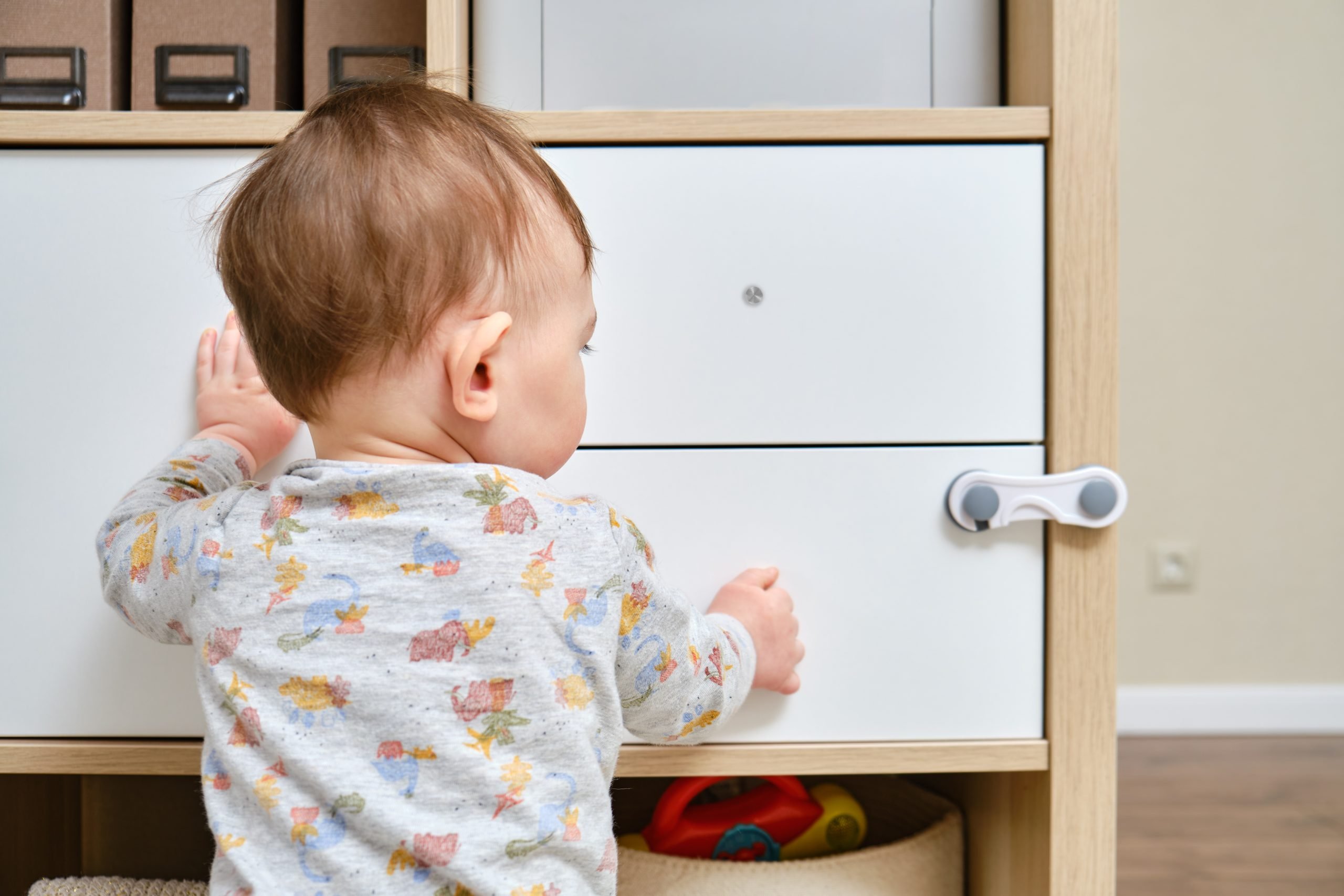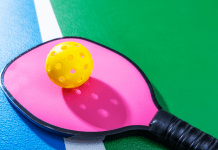This post is written and sponsored by Children’s Mercy Kansas City.

All parents want to keep their little ones safe. It can be easy to overlook certain safety hazards – especially if you don’t know they’re hazardous! We’ve outlined 10 common safety concerns and how you can address them to make your home as safe as possible.
1. Medications
It’s advised to keep all medications out of sight and stored up high after each use. It’s also recommended to keep medications in original, child-resistant packaging instead of pill boxes or other easily accessible containers. Instead of keeping medication handy, use a reminder tool to help you remember when to take and/or give doses. Finally, keep the Poison Help number – 1-800-222-1222 – in your phone and visible in your home for emergencies.
2. Firearms
If you have guns in your home, it’s critical to always keep them out of reach and sight of children. Store them unloaded and secured with child-resistant gun locks in a locked container, with ammunition in a separate locked container.
3. Batteries
Button batteries are common in toys, but if swallowed they can cause major harm to your child. Search your home, and any place your child goes, for toys or gadgets that contain coin-sized lithium batteries (can include things like remotes, watches, key fobs, etc.). Keep these devices out of sight and reach of children, and keep loose batteries locked away or use duct tape to secure the battery compartment.
4. Fire safety
It’s important to check your smoke alarms often, around every month. There should be a smoke alarm on every level of your home, inside bedrooms and near sleep areas. Create a home fire escape plan and practice a home fire drill twice a year where you escape in under 2 minutes.
5. Fall risks
When using highchairs, swings or strollers, babies and young children should always be strapped in. Use approved safety gates at the tops and bottoms of stairs, attaching to the wall if possible. When going to the playground, try to go to locations with shock-absorbing surfaces like rubber, turf or mulch. If your child falls, the landing will be more cushioned than on asphalt or concrete.
6. Safe sleep
Follow the ABCs of newborn sleep:
- A. Alone. Newborns should sleep in their own area, with no other people, pillows, blankets or stuffed animals.
- B. On their backs. Until age 1, place your baby on their back. Once they can roll in both directions, you can leave them in that position, but lay them on their back initially.
- C. In a crib. Place babies in a crib, bassinet or portable play area. Babies should not sleep on an adult bed or other soft mattress.
Make sure to stop swaddling once your child shows signs of rolling and adjust their crib once they are sitting up or pulling to stand.
7. Poisonings
Keep household cleaning products up and out of reach and put them away after each use. Keep cleaning products in original containers and look for products with child-restraint containers. In addition to cleaning products, keep personal care products like lotion, makeup and cleaners out of reach of children. Again, save the Poison Help number – 1-800-222-1222 – in your phone for emergencies.
8. Water safety
Always watch children when they are in, or around, any body of water. Use life jackets for small children and non-swimmers whenever they are in or near water and consider swimming lessons when your child is ready. Make sure to fence in any home pools with self-latching gates, and empty kids’ pools after each use. Water safety also applies to bath time – you should make sure to be in arms reach of your child at all times when they are in the bath.
9. Helmets
Children and adults should wear a helmet every time when riding a bike, scooter or skateboard. This video shows how to make sure a helmet has the proper fit. If your kids are biking around the neighborhood, make sure they stay in safe locations like sidewalks, bike paths or bike lanes.
10. Furniture tip overs
Any piece of furniture can cause injury to young children if it tips over on top of them. Consider mounting TVs flat to the wall, and secure heavy furniture with anti-tip brackets or wall straps. You can also rearrange furniture to keep heavier items on lower shelves/drawers, and avoid keeping food, toys or other items in places kids may be tempted to climb.

Laura Kemerling is passionate about caring for pediatric patients and their families, as well as her fellow staff and healthcare providers. Currently leading the Injury Prevention Program at Children’s Mercy, Laura has been the manager of The Center for Childhood Safety for the past year. Laura has worked as a registered nurse for over 20 years, obtaining her Bachelor of Science in Nursing from Missouri Western State University in 2003 and her Master of Science in Nursing Education from Benedictine University in 2018. Her background includes providing care in the pediatric operating room setting, adult intensive care unit, neonatal and pediatric critical care transport, providing nursing education, and leadership. Laura takes pride in having served on a list of local, regional, and national boards, committees, and coalitions over the years. Most recently, she has focused her attention on advocating for, and collaborating to, create safer environments for babies, children, and adolescents.















